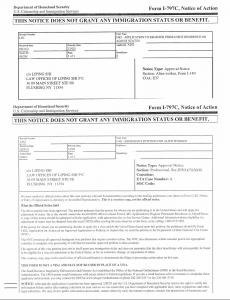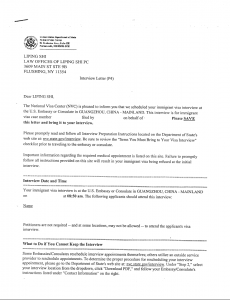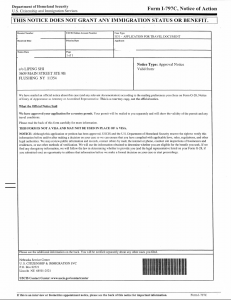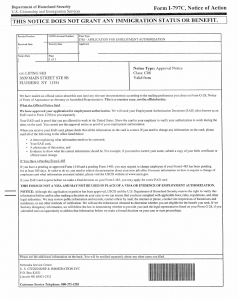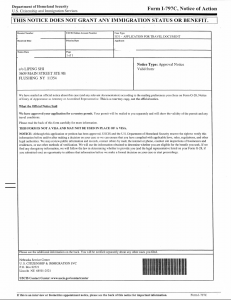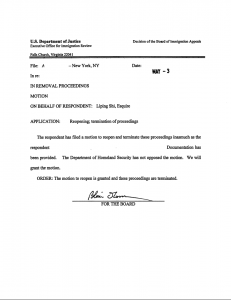EB-3 Employment-Based Immigration: Third Preference
You may be eligible for this immigrant visa preference category if you are a skilled worker, professional, or other worker.
- “Skilled workers” are persons whose job requires a minimum of 2 years training or work experience, not of a temporary or seasonal nature
- “Professionals” are persons whose job requires at least a U.S. baccalaureate degree or a foreign equivalent and are a member of the professions
- The “other workers” subcategory is for persons performing unskilled labor requiring less than 2 years training or experience, not of a temporary or seasonal nature.
Eligibility Criteria
| Sub-categories | Evidence | Certification |
| Skilled Workers | · You must be able to demonstrate at least 2 years of job experience or training
· You must be performing work for which qualified workers are not available in the United States |
Labor certification and a permanent, full-time job offer required. |
| Professionals | · You must be able to demonstrate that you possess a U.S. baccalaureate degree or foreign degree equivalent, and that a baccalaureate degree is the normal requirement for entry into the occupation
· You must be performing work for which qualified workers are not available in the United States · Education and experience may not be substituted for a baccalaureate degree |
Labor certification and a permanent, full-time job offer required. |
| Unskilled Workers (Other Workers) | You must be capable, at the time the petition is filed on your behalf, of performing unskilled labor (requiring less than 2 years training or experience), that is not of a temporary or seasonal nature, for which qualified workers are not available in the United States. | Labor certification and a permanent, full-time job offer required. |
Note: While eligibility requirements for the third preference classification are less stringent, you should be aware that a long backlog exists for visas in the “other workers” category. See the “Department of State: Visa Bulletin” page.
U.S. Department of Labor – Labor Certification
Third preference petitions must generally be accompanied by an approved, individual labor certification from the Department of Labor on Form ETA-9089. In some cases, the petition may be submitted to U.S. Citizenship and Immigration Service (USCIS) with an uncertified ETA-9089 for consideration as Schedule A, Group I. For more information, see the “Department of Labor: Foreign Labor Certification” page.
Consular Processing
Once you are the beneficiary of an approved immigrant petition and an immigrant visa number is immediately available to you, there are two ways to apply for lawful permanent resident status (a Green Card). If you are outside of the United States, you may apply at a U.S. Department of State consulate abroad for an immigrant visa in order to come to the United States and be admitted as a permanent resident. This pathway is referred to as consular processing.
If you are already in the United States, you can apply for permanent resident status without having to return to your home country to complete processing. This process is called adjustment of status. For more information, see USCIS Adjustment of Status page.
The National Visa Center (NVC) is responsible for collecting visa application fees and supporting documentation. The NVC will notify the petitioner and you (the beneficiary) when the visa petition is received and again when an immigrant visa number is about to become available. They will also notify you when you must submit immigrant visa processing fees (commonly referred to as “fee bills”) and supporting documentation.
Once a visa is available or your priority date is current (earlier than the cut-off date listed in the monthly Visa Bulletin), the consular office will schedule you for an interview. The consular office will process your case and decide if you are eligible for an immigrant visa.
If you are granted an immigrant visa, the consular officer will give you a packet of information. This packet is known as a “Visa Packet.” Do not open this packet.
You will need to pay a USCIS Immigrant Fee. USCIS uses this fee to process your immigrant visa packet and produce your Green Card. We encourage you to pay the fee online after you receive your visa packet and before you depart for the United States.
When you arrive in the United States, you should give your Visa Packet to the U.S. Customs and Border Protection (CBP) officer at the port of entry. The CBP officer will inspect you and determine whether to admit you into the United States as a lawful permanent resident. If the CBP officer admits you, you will then have lawful permanent resident status and be able to live and work in the United States permanently.
Advance Parole
Due to recent changes to U.S. immigration law, travel outside of the United States may have severe consequences for aliens who are in the process of adjusting their status or applying for an immigrant visa (refugees and asylees). Upon return, these aliens may be found inadmissible, their applications may be denied, or both. It is important that the alien obtain the proper documentation before leaving the United States.
Aliens who have pending applications for certain immigration benefits need Advance Parole to re-enter the U.S. after traveling abroad.
Aliens applying for advance parole on the basis of a pending application for adjustment of status must be approved for advance parole prior to leaving the United States in order to avoid the termination of their pending application for adjustment. Note: this does not apply to aliens who have applied to adjust to permanent resident status and who maintain H-1B (Specialty Worker) or L-1 (Intracompany Transferee) status, or their dependents, who have applied to adjust to permanent resident status and who have valid H-1B or L status and valid visas, V nonimmigrants who have a valid V nonimmigrant visa, are in valid V nonimmigrant status and have or obtain a valid V nonimmigrant visa before applying for readmission to the US, and K-3/4 nonimmigrants who have applied to adjust to permanent resident status and who have a valid K-3/4 nonimmigrant visa, are in valid K-3/4 nonimmigrant status and have or obtain a valid K-3/4 nonimmigrant visa before applying for readmission to the US.
An I-131 application for Advance Parole is filed with U.S. Citizenship and Immigration Services (USCIS) pursuant to the instructions found on their Website.
Aliens in the United States should, prior to departure, obtain Advance Parole in order to re-enter the United States after travel abroad if they have:
- Filed an application for adjustment of status but have not received a decision from the U.S. Citizenship and Immigration Services;
- Hold refugee or asylee status and intend to depart temporarily to apply for a U.S. immigrant visa in Canada; and/or
- An emergent personal or bona fide reason to travel temporarily abroad.
Applicants who are the beneficiary of a Private bill and Applicants who are under deportation proceedings must file to the Department of Homeland Security, 425 I Street, NW, ATTN: Parole and Humanitarian Assistance Branch, Washington, DC 20536 Aliens in the United States are not eligible for Advance Parole if they are:
- In the United States illegally; or
- An exchange alien subject to the foreign residence requirement.
Please note that Advance Parole does not guarantee admission into the United States. Aliens with Advance Parole are still subject to the U.S. Customs and Border Protection inspection process at the port of entry.
Work Permit
Many people want to come to the United States to work. To work in the United States, you must have one of the following:
- A Permanent Resident Card (also known as a Green Card),
- An Employment Authorization Document(work permit), or
- An employment-related visa which allows you to work for a particular employer.
Each of the documents listed above has different application requirements. To apply for one of the documents above, you must meet different requirements. If your application is approved, the conditions you must meet and how long you can work in the United States will depend on whether you receive a Green Card, work permit, or visa. It is important that you adhere to all the conditions of your particular work authorization. If you violate any of the conditions, you could be removed from or denied reentry into the United States.
Temporary (Nonimmigrant) Worker
A temporary worker is an individual seeking to enter the United States temporarily for a specific purpose. Nonimmigrants enter the United States for a temporary period of time, and once in the United States, are restricted to the activity or reason for which their nonimmigrant visa was issued.
Reentry Permit
A lawful permanent resident (LPR) normally may travel outside the United States and return; however, there are some limitations. A reentry permit can help prevent two types of problems:
- Your Permanent Resident Card becomes technically invalid for reentry into the United States if you are absent from the United States for 1 year or more.
- Your U.S. permanent residence may be considered as abandoned for absences shorter than 1 year if you take up residence in another country.
A reentry permit establishes that you did not intend to abandon status, and it allows you to apply for admission to the United States after traveling abroad for up to 2 years without having to obtain
a returning resident visa. Reentry permits are normally valid for 2 years from the date of issuance.
You may also want to get a reentry permit if you plan on traveling outside the United States and cannot or do not wish to get a passport from your home country. Many countries throughout the world may allow you to use a reentry permit much like you would use a passport—placing necessary visas and entry and exit stamps in the permit—so you may use it as your main travel document. Be sure to check with any country you plan to visit about specific requirements before you travel.
To obtain a reentry permit, file Form I-131, Application for Travel Document. You should file this application well in advance of your planned trip. Filing instructions and forms are available on USCIS Web site at www.uscis.gov .
Immigration Court Proceedings
Immigration Court Proceedings.
If you are the close relative of a US citizen/LPR, but you have been placed in removal proceedings or have an outstanding order of removal, please contact us.
For Immigration Court Practice Manual, please refer to
https://www.justice.gov/eoir/office-chief-immigration-judge-0

